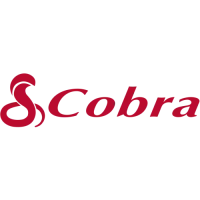Suspension
Adjustment:
1. Front forks
1.1. Fork oil
1.1.1. Oil type
1.1.1.1. Heavier weight oil – more damping – slower responding
1.1.1.2. Lighter weight oil – less damping – quicker responding
1.1.2. Oil quantity / level
1.1.2.1. Greater quantity / higher level – greater bottoming
resistance, stiffer near the end of the travel.
1.1.2.2. Smaller quantity / lower level – less bottoming resistance,
less stiff near the end of the travel.
1.2. Fork spring
1.2.1. Stiffer spring (higher spring rate) – stiffer throughout the travel.
1.2.2. Less stiff spring (lower spring rate) – less stiff throughout the travel.
1.3. Gas pressure – always bleed off any pressure.
1.4. Fork height
1.4.1. Rise in clamps for quicker turning.
1.4.2. Lower in clamps for improved straight line stability.
2. Rear shock
2.1. Preload adjustment
2.1.1. More preload (greater distance) – less race sag.
2.1.2. Less preload (smaller distance) – more race sag.
2.2. Shock spring
2.2.1. Stiffer spring – stiffer throughout the travel.
2.2.2. Less stiff spring – less stiff throughout the travel.
2.3. Compression damping
2.3.1. Harder (more damping, slower) – adds resistance to the
suspension motion when the suspension is compressing.
2.3.2. Softer (less damping, quicker) – reduces resistance to the
suspension motion when the suspension is compressing.
2.4. Rebound damping
2.4.1. Harder (more damping, slower) – adds resistance to the
suspension motion when the suspension is returning to full length.
2.4.2. Softer (less damping, quicker) - reduces resistance to the
suspension motion when the suspension is returning to full length
Front Fork Operation
The front suspension on the CX65 works under the principals of hydraulic
damping, and it features full adjustability to help tune the fork to meet each rider’s
needs. The CARD fork contains MXT ‘Smart Leg’ technology that provides very
progressive operation; allowing a small bike to perform well on track surfaces
ripped up by larger machines.
The key to Smart Leg technology is to understand that each leg has a different
role. The brake side leg features a conventional open cartridge. This cartridge
handles both standard compression and rebound damping duties. Rebound

